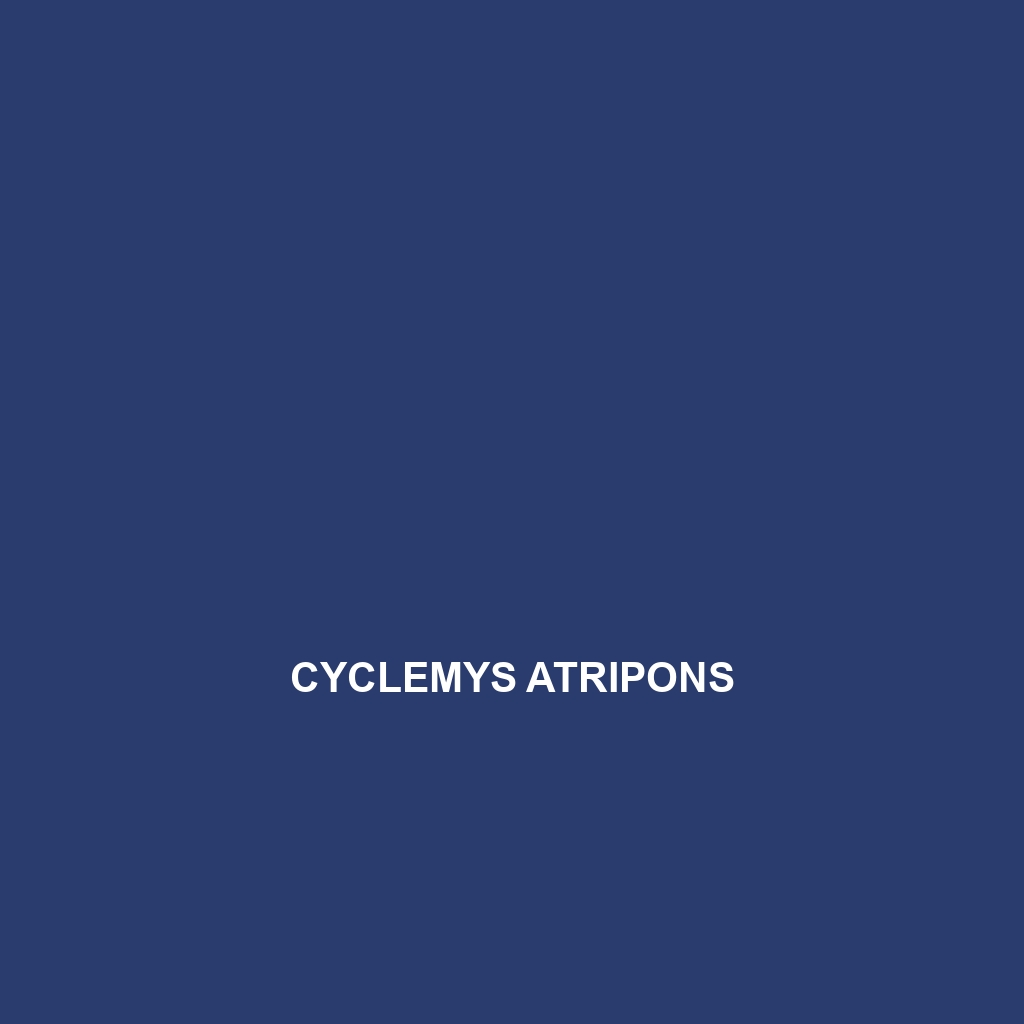Cyclemys atripons: The Beautiful Black-spotted Pond Turtle
Common Name: Cyclemys atripons
Scientific Name: Cyclemys atripons
Habitat: This species of turtle is primarily found in freshwater habitats across Southeast Asia. The geographic range includes countries such as Thailand, Cambodia, Vietnam, and parts of Malaysia. Cyclemys atripons thrives in slow-moving rivers, ponds, and marshes characterized by lush vegetation and abundant aquatic plants, providing an ideal environment for their survival.
Physical Characteristics: Cyclemys atripons is known for its distinctive black and yellow-patterned shell, which typically measures between 25 to 30 centimeters in length. The carapace is somewhat dome-shaped, adorned with bold, dark spots that vary among individuals. The turtle’s limbs are robust, featuring dark, webbed feet that aid in swimming. Notably, its face is less rounded compared to other turtles, with a long snout-like appearance, making it an easily recognizable species among freshwater turtles.
Behavior: Cyclemys atripons exhibits a semi-aquatic lifestyle, spending ample time both in water and on land. Typically active during the day, these turtles prefer to bask under the sun on rocks or logs near the water. They are known for their shy nature, retreating into the water quickly when disturbed. This species also displays a unique hibernation behavior, finding shelter under substrates during colder months or dry seasons.
Diet: As omnivores, Cyclemys atripons enjoys a diverse diet that includes aquatic plants, small invertebrates, and occasionally, fish. Their feeding habits are opportunistic; they forage both in water and on land. This adaptability allows them to thrive in varying environments, making them proficient foragers in their freshwater habitats.
Reproduction: Cyclemys atripons typically breeds during the wet season, with nesting occurring between May and July. Female turtles nest in sandy beaches or soft soil near water sources, laying an average of 10 to 15 eggs per clutch. After incubation, which lasts around 60 days, the hatchlings emerge to begin a life of self-sufficiency, facing numerous predators in their early stages.
Conservation Status: The conservation status of Cyclemys atripons is currently listed as “Vulnerable” on the IUCN Red List. Threats to its population include habitat loss due to urbanization and pollution, as well as collection for the illegal pet trade. Conservation efforts are needed to ensure the survival of this stunning species in its natural habitat.
Interesting Facts: One fascinating characteristic of Cyclemys atripons is its ability to hold its breath for extended periods, allowing it to remain submerged for up to 30 minutes while foraging. Additionally, each turtle displays unique patterns on its shell, much like human fingerprints, making them scientifically appealing for studies on biodiversity.
Role in Ecosystem: Cyclemys atripons plays a crucial role in its ecosystem by helping maintain healthy aquatic environments. As herbivores, these turtles assist in the growth control of aquatic plants, preventing overgrowth. Furthermore, they contribute to the nutrient cycle; their waste products provide essential organic matter that supports aquatic life, thus highlighting their importance in maintaining ecological balance.
